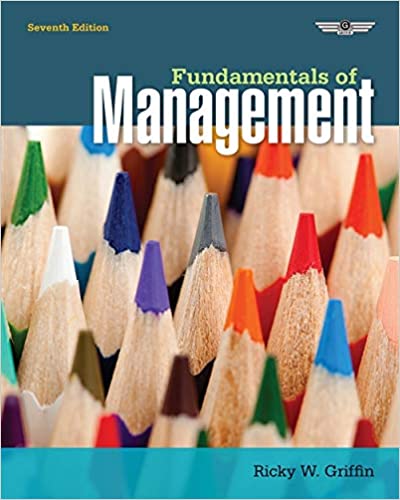
Fundamentals of Management 7th Edition by Ricky Griffin
Edition 7ISBN: 978-1133627494
Fundamentals of Management 7th Edition by Ricky Griffin
Edition 7ISBN: 978-1133627494 Exercise 18
Exercise Overview
Decision-making skills refer to the ability to recognize and define problems and opportunities correctly and then to select an appropriate course of action for solving problems or capitalizing on opportunities. This exercise allows you to build your decision-making skills while applying goal-setting theory to the task of planning your career.
Exercise Background
Lee Iacocca started his career at Ford in 1946 in an entry-level engineering job. By 1960, he was a vice president and in charge of the group that designed the Mustang, and ten years later, he was a president of the firm. After being fired from Ford in 1978, he then became a president at Chrysler and eventually rose to the CEO spot, a job he held until he retired in 1992. What's really remarkable about Iacocca's career arc-at least the upward trajectory-is the fact that he apparently had it all planned out, even before he finished college.
The story goes that, while he was still an undergraduate, Iacocca wrote out a list of all the positions that he'd like to hold during his career. Number one was "engineer at an auto maker," followed by all the career steps that he planned to take until he was a CEO. He also included a timetable for his climb up the corporate ladder. Then he put his list on a three-by-five-inch card that he folded and stowed in his wallet, and we're told that every time he took out that card and looked at it, he gained fresh confidence and drive. He apparently reached the top several years ahead of schedule, but otherwise he followed his career path and timetable faithfully.
As you can see, Iacocca used goal-setting theory to motivate himself, and there's no reason why you can't do the same.
Now describe a career path that will lead you toward that goal. It may help to work "backward"-that is, starting with your final position and working backward in time to some entry level job. If you aren't sure about the career path that will lead to your ultimate goal, do some research. Talk to someone in your selected career field, ask an instructor who teaches in it, or go online. The website of the American Institute of Certified Public Accountants, for example, has a section on "Career Resources," which includes information about career paths and position descriptions for accounting.
Decision-making skills refer to the ability to recognize and define problems and opportunities correctly and then to select an appropriate course of action for solving problems or capitalizing on opportunities. This exercise allows you to build your decision-making skills while applying goal-setting theory to the task of planning your career.
Exercise Background
Lee Iacocca started his career at Ford in 1946 in an entry-level engineering job. By 1960, he was a vice president and in charge of the group that designed the Mustang, and ten years later, he was a president of the firm. After being fired from Ford in 1978, he then became a president at Chrysler and eventually rose to the CEO spot, a job he held until he retired in 1992. What's really remarkable about Iacocca's career arc-at least the upward trajectory-is the fact that he apparently had it all planned out, even before he finished college.
The story goes that, while he was still an undergraduate, Iacocca wrote out a list of all the positions that he'd like to hold during his career. Number one was "engineer at an auto maker," followed by all the career steps that he planned to take until he was a CEO. He also included a timetable for his climb up the corporate ladder. Then he put his list on a three-by-five-inch card that he folded and stowed in his wallet, and we're told that every time he took out that card and looked at it, he gained fresh confidence and drive. He apparently reached the top several years ahead of schedule, but otherwise he followed his career path and timetable faithfully.
As you can see, Iacocca used goal-setting theory to motivate himself, and there's no reason why you can't do the same.
Now describe a career path that will lead you toward that goal. It may help to work "backward"-that is, starting with your final position and working backward in time to some entry level job. If you aren't sure about the career path that will lead to your ultimate goal, do some research. Talk to someone in your selected career field, ask an instructor who teaches in it, or go online. The website of the American Institute of Certified Public Accountants, for example, has a section on "Career Resources," which includes information about career paths and position descriptions for accounting.
Explanation
The position that I would like to hold i...
Fundamentals of Management 7th Edition by Ricky Griffin
Why don’t you like this exercise?
Other Minimum 8 character and maximum 255 character
Character 255


